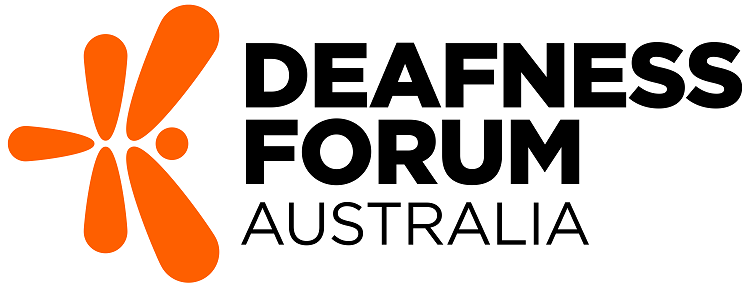The Royal Commission into Violence, Abuse, Neglect and Exploitation of People with Disability heard evidence about the benefits of Auslan being offered as a language other than English.
A witness at the Disability Royal Commission, Natalie Sandon-Stanhope directly observed hearing children being able to communicate in the playground with her deaf child and being able to make small talk in the classroom. Another witness, Dr Breda Carty said it can be beneficial for deaf and hearing students and help with greater connection between peers and the development of friendships.
Other witnesses at Public hearing 29 also spoke of ‘hybrid options’ or schools that incorporate strategies to deliver education in both Auslan and English. These settings were also described as ‘bilingual schools’ or ‘co-enrolment programs.’ While they look like units within regular schools, they are much more committed to ensuring that there’s complete access in the environment for all of the students. Usually the deaf students are taught in Auslan and Auslan is taught as the LOTE for all students within the school. There are very few schools like that around the country, but they have demonstrated a strong commitment to being very deaf-friendly environments.
Some examples of these types of settings in Australia include Shenton College in Western Australia and Toowong State School and Miami State High School in Queensland.
Rebecca Adam said in her experience, those who had graduated from Shenton College had a ‘marked difference’ in their communication and literacy skills. She said ‘you can see that their language levels in Auslan and English have significantly increased compared to Deaf individuals who have been mainstreamed or attended other schools.’
Auslan is the language used by the Australian Deaf community. Auslan is a distinct language with its own structure, grammar and syntax. It is distinct to Signed English which, as a simplistic description, attempts to mirror the grammar of and reflect the spoken English language.
The Royal Commission heard about the importance of Auslan to the Deaf community. According to Jen Blyth, ‘there is that shared experience and connection through language. And that’s what the Deaf community essentially is about.’
Access to learning Auslan and communication through Auslan is not available for all deaf people. Access to learning Auslan can depend on where a person lives, who around them signs and whether those people are deaf or hearing. Auslan was recognised for the first time in 1991 through its inclusion in the Australian Language and Literacy Policy. This recognition made deaf people ‘feel quite confident and happy and, in fact, quite proud of their language’. Recognition had a flow on effect to other areas – it became easier for deaf people to advocate for interpreters on the same basis as other community languages.
With Auslan being recognised as a language, debates around the method of delivering education to deaf children took on more respect for Auslan. Australia does not have any formally declared national languages. Although English is the de-facto national language. The only national recognition of Auslan remains in the 1991 policy. However, the 1991 policy is not the main mechanism that deaf people use to realise their right to Auslan. Rather, the Disability Discrimination Act (DDA) and its standards, and the United Nations Convention on the Rights of Persons with Disabilities (CRPD) are seen as more modern sources of support for a right to language access.
There is presently a right to interpreters in limited circumstances, such as in the criminal justice system or where an interpreter is a reasonable adjustment for the purpose of the DDA. Limiting access to Auslan to discrete domains understates the value it brings to the broader community. It creates the perception that it is a tool to fix a problem rather than recognising it as a means of communication and a cultural asset, worthy of promotion and protection.
Recognising access to language as a human right is not secure in Australian law and practice. The CRPD recognises sign languages as equal to spoken languages.

